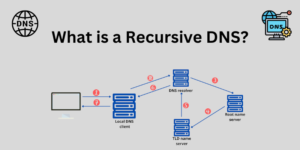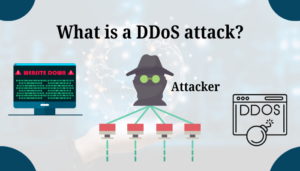Reverse DNS (rDNS) is a crucial networking process that translates an IP address back into its associated domain name. Unlike the standard Domain Name System (DNS), which converts user-friendly domain names into numerical IP addresses, reverse DNS performs the opposite function, providing a way to identify the domain name linked to a specific IP address. This process is essential for various applications, including email server configurations to combat spam, network diagnostics, security measures, and enhancing web analytics.
In reverse DNS, specialized DNS records known as Pointer (PTR) records are used to map IP addresses to domain names. This helps verify the legitimacy of email sources, identify network traffic origins, and comply with regulatory reporting requirements. While reverse DNS is a powerful tool for network administrators and security professionals, it requires precise configuration and maintenance to ensure accuracy and reliability in the reverse lookup results.
How Reverse DNS Works
Reverse DNS involves querying a special type of DNS record called a PTR (Pointer) record. The PTR record maps an IP address back to a hostname. The process works as follows:
- Query Initiation: A reverse DNS lookup starts with an IP address.
- IP Address Transformation: The IP address is reversed and appended with the .in-addr.arpa domain for IPv4 addresses or the .ip6.arpa domain for IPv6 addresses. For example, the IP address 192.0.2.1 becomes 1.2.0.192.in-addr.arpa.
- PTR Record Search: The DNS system searches for a PTR record that matches the transformed IP address.
- Hostname Resolution: If a PTR record is found, it returns the associated hostname.
What is the Importance of Reverse DNS?
Reverse DNS serves several critical purposes in modern networking:
- Email Delivery and Anti-Spam Measures: Many email servers use reverse DNS lookups as part of their spam detection mechanisms. A mismatch between the PTR record and the forward DNS (A or AAAA) record can signal potential spam or fraudulent activity.
- Network Troubleshooting: Network administrators use reverse DNS to identify the hostnames of IP addresses when diagnosing network issues.
- Logging and Monitoring: Reverse DNS helps in interpreting log files and monitoring network traffic by providing human-readable hostnames instead of numeric IP addresses.
- Security: Reverse DNS can help detect malicious activity by identifying suspicious or unauthorized IP addresses within a network.
Configuring Reverse DNS
Setting up reverse DNS involves creating PTR records for the IP addresses managed by a domain or network administrator. The steps generally include:
- IP Address Allocation: Ensure that you have control over the IP addresses for which you want to configure reverse DNS.
- DNS Hosting Provider: Use your DNS hosting provider’s interface or API to create PTR records. This might involve adding entries in the DNS management section.
- PTR Record Creation: Create PTR records that map each IP address to the desired hostname.
- Verification: Use tools like dig or nslookup to verify that the PTR records are correctly configured and resolvable.
Tools for Reverse DNS Lookup
Several tools and utilities can perform reverse DNS lookups, including:
- Command-Line Tools: Utilities like nslookup, dig, and host are commonly used to perform reverse DNS lookups.
- Online Services: Websites like MXToolbox, WhatsMyIP, and IPinfo offer web-based reverse DNS lookup services.
What are the Uses of Reverse DNS Lookups?
Reverse DNS (rDNS) lookups are utilized in various scenarios across different fields of network management, cybersecurity, and email communication. Here’s a detailed look at the primary uses of reverse DNS lookups:
Email Delivery and Anti-Spam Measures
One of the most common uses of reverse DNS lookups is in email delivery systems. Many email servers perform DNS lookups on incoming mail to verify the sender’s IP address. The main purposes include:
- Spam Prevention: rDNS helps to filter out spam. If an email server’s IP address does not have a valid PTR record or the PTR record does not match the domain of the email sender, the email may be flagged as spam or rejected.
- Domain Verification: Ensuring that the IP address used to send the email corresponds to the domain claimed in the email headers. This verification helps to reduce the risk of phishing and email spoofing.
Network Troubleshooting and Diagnostics
Network administrators use rDNS lookups to diagnose and troubleshoot network issues. Some common scenarios include:
- Identifying Hosts: Resolving IP addresses back to hostnames helps in identifying the devices and services on a network. This identification is particularly useful when examining network logs or tracking network traffic.
- Tracing IP Activity: When analyzing network logs, reverse DNS can provide a clearer understanding of which hosts are communicating, making it easier to identify and resolve issues.
Cybersecurity and Intrusion Detection
DNS is a valuable tool in cybersecurity for monitoring and protecting networks:
- Detecting Malicious Activity: By performing rDNS lookups on incoming connections or traffic, security systems can identify and block potentially malicious hosts based on their domain names.
- Reconnaissance: Security analysts often use rDNS lookups during the reconnaissance phase of penetration testing to map out the network and understand the target’s domain structure.
Logging and Monitoring
For system administrators and IT professionals, rDNS is essential for interpreting and managing logs:
- Human-Readable Logs: Converting IP addresses to hostnames in logs makes it easier to understand and analyze network events. Hostnames provide more context than raw IP addresses, facilitating quicker incident response and analysis.
- Traffic Analysis: Monitoring tools often use rDNS to provide detailed reports about network traffic, showing which hostnames are generating or receiving traffic.
Regulatory Compliance and Auditing
In certain industries, maintaining detailed and understandable logs is necessary for regulatory compliance. Reverse DNS helps in:
- Audit Trails: Resolving IP addresses to hostnames creates clear audit trails, which can be crucial for complying with regulations such as GDPR, HIPAA, or PCI-DSS.
- Forensics: In the event of a security breach, rDNS lookups can assist forensic analysts in tracing back the source of the breach to specific host names.
Enhancing User Experience in Applications
Some applications and services use rDNS to enhance user interactions:
- Custom Error Pages: Websites and services can use rDNS to customize error messages or alerts based on the domain names of the users or services accessing them.
- Geo-Localization: Although not as accurate as other methods, rDNS can assist in identifying the geographic location of an IP address based on the hostname information.



